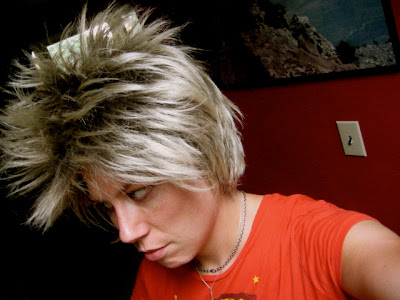I've been wondering how different people define ghetto because of remarks I've heard since moving to Oceanside. It came up again when someone recently asked Matthew, "Why'd you guys move to the ghetto?" It's the same question put to me my first year in Seattle when I lived in the Central District.
"What are you doing down there?"
I had to laugh because while the Central District wasn't as lush as Queen Anne or Fremont it was still more or less teeming with rhododendron bushes. It was, by any standard I'd witnessed, a flourishing and glorious example of a ghetto. Before I left Cincinnati, my experience was of the inner city and I associated 19th century Italianate brick buildings, crumbling stoops, and piss-stained alleys with gunshots and poverty. I was confused when I moved to Minneapolis and was warned against neighborhoods made up of houses with vinyl siding and chain link fences. To my eye it looked too residential to be dangerous.
Here in Oceanside it is, as elsewhere, relative. By San Diego and Orange County standards, Oceanside has been considered a pit. I was working for a couple of days in Michigan last month and got to talking with two security guards at the venue. Both of them had lived in Oceanside in the past - in 1975 and 1985 - and they flipped when I said it's my new home.
"Oceandive?" one of them asked.
"We used to call it Oceanslime," the other said and then pulled up his sleeve to bare a blurry blue Marine tattoo on his bicep.
"Nice," I said, "that's nice. Yes, I live there. But you know, it's changed a lot."
"I hope so," the older one said. "Back when I was stationed at Pendleton, it was all titty bars and pawn shops."
Within Oceanside, there is further delineation. South of Mission Avenue is considered more prosperous and historic and charming with its mix of modest homes: bungalow, ranch, cottage, adobe. Inland are the hills and bigger homes, many of them newer. And north of Mission, where we are, is the so-called ghetto. I gather that it was rougher in the past, like the rest of the town, but that our pocket has held on longer to its grit. And I'm not sure, but I don't think the word ghetto is being used here as a euphemism for racial color because it seems like the whole town is a blend of black, white and brown.
In any case, not only are there way more white picket fences north of Mission than I am personally comfortable with but there are several boats parked down the street and that does it for me. I know it's geographically relative and I'm aesthetically biased but I kind of think if one of more of your neighbors owns a boat you cannot technically be considered a ghetto anymore. Time's up.
4.27.2011
Subscribe to:
Post Comments (Atom)


No comments:
Post a Comment